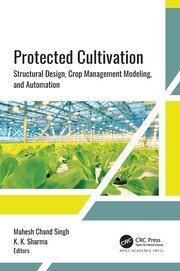
E-Book
Structured Foods
ISBN : 9781003355441
Author : Gnana Moorthy Eswaran U.
Publisher : CRC Press
Year : 2024
Language : English
Type : E-book
Description : Structured Foods is an important reference that discusses the recent research trends on structural development in various foods. This book covers different tools and food engineering techniques such as encapsulation, 3D and 4D printing, imaging techniques, and clean meat technology. It discusses how various foods can be broken down and manipulated at the molecular level to improve their quality, safety, and healthfulness. It describes the structuring of components like starch, proteins, and polysaccharides and the stability and bioavailability of different food structures. This is a useful reference for researchers and industry experts in food technology, food engineering, and food processing. Structured Foods เป็นเอกสารอ้างอิงที่สำคัญที่กล่าวถึงแนวโน้มการวิจัยล่าสุดเกี่ยวกับการพัฒนาโครงสร้างของอาหารต่างๆ หนังสือเล่มนี้ครอบคลุมถึงเครื่องมือและเทคนิคทางวิศวกรรมอาหารต่างๆ เช่น การห่อหุ้ม การพิมพ์ 3 มิติและ 4 มิติ เทคนิคการสร้างภาพ และเทคโนโลยีเนื้อสัตว์สะอาด หนังสือเล่มนี้กล่าวถึงวิธีการแยกและจัดการอาหารต่างๆ ในระดับโมเลกุลเพื่อปรับปรุงคุณภาพ ความปลอดภัย และคุณค่าทางโภชนาการของอาหาร หนังสือเล่มนี้อธิบายถึงการจัดโครงสร้างของส่วนประกอบต่างๆ เช่น แป้ง โปรตีน และโพลิแซ็กคาไรด์ ตลอดจนความเสถียรและความสามารถในการดูดซึมของโครงสร้างอาหารต่างๆ หนังสือเล่มนี้เป็นเอกสารอ้างอิงที่มีประโยชน์สำหรับนักวิจัยและผู้เชี่ยวชาญในอุตสาหกรรมด้านเทคโนโลยีอาหาร วิศวกรรมอาหาร และการแปรรูปอาหาร ผลงานนี้กล่าวถึงปัญหาสำคัญที่เกี่ยวข้องกับอาหารซึ่งจำเป็นต้องได้รับการแก้ไข รวมถึงการเก็บเกี่ยวอาหารให้เพียงพอต่อประชากรโลก การปรับปรุงความยั่งยืนของอาหาร การลดขยะอาหารและมลพิษ และการปรับปรุงสุขภาพของมนุษย์ นอกจากนี้ ยังมุ่งเน้นไปที่เทคโนโลยีทางวิทยาศาสตร์ใหม่ๆ ที่นักวิทยาศาสตร์นำไปใช้เพื่อปรับปรุงระบบอาหาร หนังสือเล่มนี้เป็นแหล่งข้อมูลสำคัญสำหรับผู้มีส่วนได้ส่วนเสียทั้งหมดในการอภิปรายเกี่ยวกับอนาคตของอาหารของเราในแวดวงวิชาการ อุตสาหกรรม และนโยบายของรัฐบาล The work addresses critical food-related issues that need to be tackled, including harvesting enough food to feed the global population, improving food sustainability, reducing food waste and pollution, and improving human health. Further, it focuses on the new scientific technologies being applied by scientists for an improved food system. The book is an important resource for all stakeholders in the debate about the future of our foods in the spheres of academic, industrial, and government policy.








